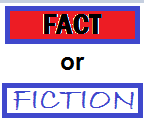Manage Your Debt - Let's Explore Your Options
GET STARTED NOWDebunking Two Credit Card Myths

Yesterday, I read an alarming article that was featured on a on a reputable money blog. It was a worrisome read, because there were a number of problems with the information that was presented. So, today, I thought I would try to put to rest some of the erroneous facts discussed in the article – they represent some of the same myths I hear from people when I am out in the community teaching classes.
As you read through this article it is important to keep one rule of credit reports and credit scores in mind. Your debt-to-limit ratio is one factor of how your credit score is determined. The ratio measures how much debt you owe compared to how much debt you could (credit limit) owe. A good debt-to-limit ratio is 30% or less.
Myth #1 – Max out (some of) your credit cards
The point in the article I read is that some creditors do not report your credit limit to the credit bureaus. This is true. Since, approximately, 30% of your credit score is based on your debt-to-credit limit ratio the Fair Isaac and Company (FICO) score may be negatively impacted by not having a credit limit. Why? Because if the creditor reports the debt that you currently owe as your highest credit limit, it will look like you are using 100% of your available credit. The highest you want that number to be is 30%.
The advice in the article was to max out your credit cards so the highest credit limit number on your credit report would be much higher than what you currently owe (because you would pay the debt down over time).
How do you get around this glitch in the credit scoring system? By keeping your balances on credit cards low! As long as you only charge what you can afford to pay off each month, your balance will remain low and your available credit ratio will be high.
If you are running a balance on your credit card, work to pay it off as soon as possible. If you can, make bigger payments each month. The farther you get away from that high credit usage, the better your debt-to-credit ratio will look.
Myth #2 – Closed a card? Don’t pay it off
Just like in myth #1, this myth is all about your debt-to-credit ratio. The reality is that when you close a credit card you also lower your credit limit. The myth is that you should leave a balance on the card and continue to make payments on the debt. The idea is that since you have a balance the score will continue to count the available credit limit. This is not true.
Your creditors are reporting that your credit limit is the same as what you currently owe them. You have NO credit limit when an account is closed – you cannot use a closed account.
Your best bet is to work to pay the debt off as quickly as possible. Try to make larger than minimum payments and if you cannot, contact a certified credit counselor to find the best option for getting out of debt.
Understanding credit scores and how they work can be daunting. The key to good credit is keeping balances on items like credit cards low and always paying your bills on time. If you are thinking about ways to beat the system, try talking to an expert. It is extremely easy to damage a credit report and difficult to repair one. If you need help call the number at the top of your screen or click on the Get Started Now button.
Published Aug 18, 2011.
